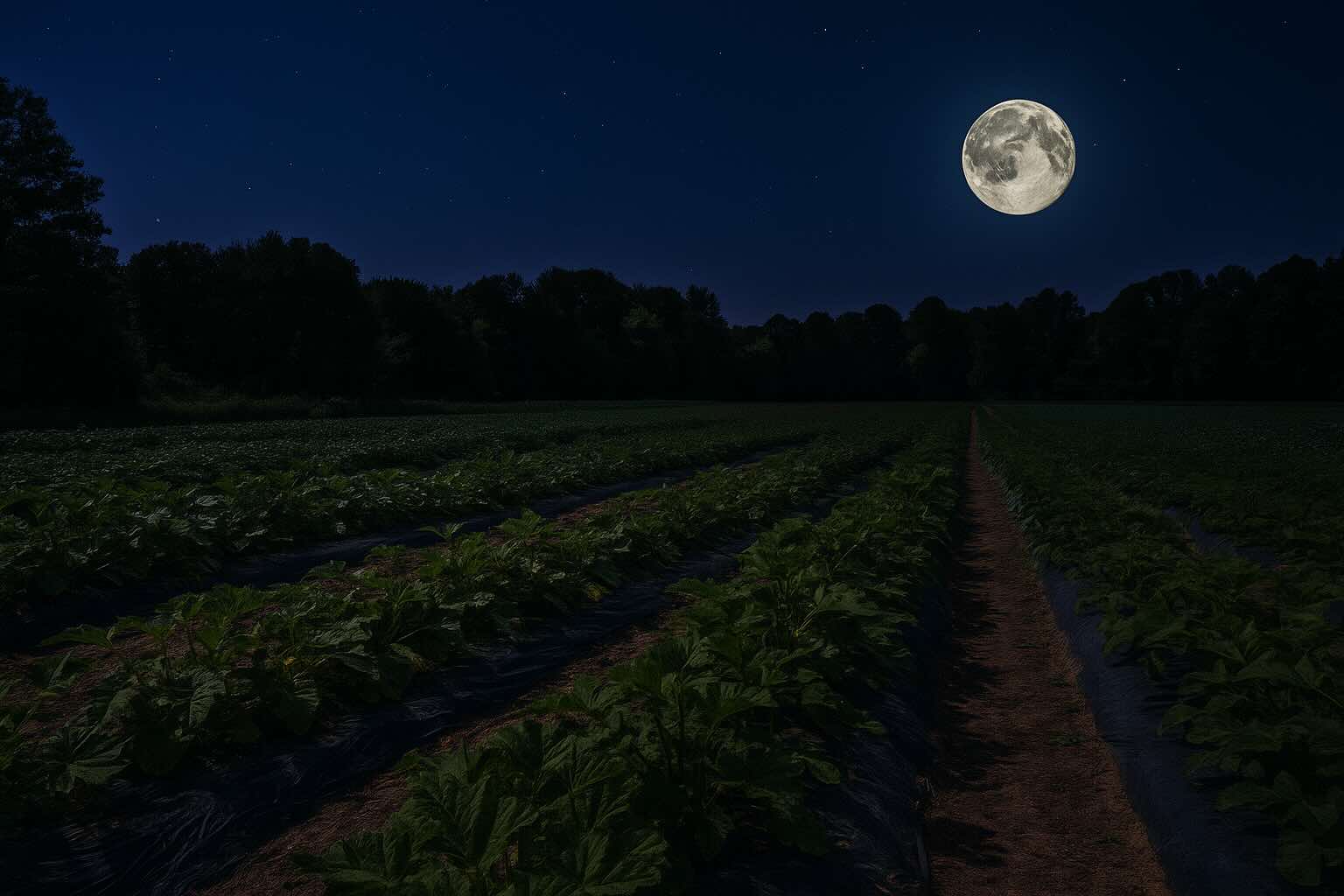For thousands of years, farmers have looked to the moon as a guide for planting, growing, and harvesting crops. Ancient civilizations saw the moon not just as a light in the night sky but as a celestial clock that shaped the rhythms of the Earth. Even today, many gardeners still consult lunar calendars when deciding the best time to sow seeds. But how much truth lies behind these traditions, and what does modern science have to say?
Farming by the Light of the Moon
The idea of planting by the moon dates back to some of the earliest farming societies. The phases of the moon were easy to observe without tools, making them a natural calendar for communities learning to cultivate the land. Farmers noticed that crops sown during certain lunar phases grew differently. Over generations, these observations became rules passed down through families and communities.
Many traditions suggested planting leafy crops during a waxing moon, when the moon grows brighter, and root crops during a waning moon, when its light fades. The belief was that the moon’s pull influenced water in the soil, just as it drives ocean tides. Whether mystical or practical, these guidelines helped farmers feel more connected to nature’s cycles.
Ancient Civilizations and Lunar Agriculture
From Mesopotamia to the Mayans, lunar calendars played a crucial role in agriculture. Babylonian farmers, for example, kept detailed records of lunar phases and their impact on harvests. In Mesoamerica, the Mayan calendar integrated lunar and solar cycles to create complex farming schedules that sustained large populations. In Europe, Celtic traditions tied moon phases to seasonal rituals of planting and harvest.
These societies saw farming as more than a mechanical task. Agriculture was sacred, and the moon was a powerful symbol of fertility and renewal. Planting by lunar cycles was both practical and spiritual, reinforcing the idea that human survival depended on harmony with celestial rhythms.
The Science Behind Lunar Planting
Modern science has taken a closer look at lunar agriculture to see if these traditions hold weight. The moon’s gravitational pull does influence water on Earth, creating tides in the oceans. While soil moisture does not rise and fall as dramatically, some researchers suggest that slight changes in groundwater could affect seed germination and root development.
Light may also play a role. The brightness of the moon during certain phases can subtly impact plant growth, particularly for seedlings sensitive to night-time light exposure. However, scientific studies have shown mixed results, with some supporting minor effects of lunar cycles and others finding no measurable difference.
Lunar Gardening Today
Despite scientific skepticism, lunar gardening remains popular around the world. Many organic farmers and home gardeners still use lunar planting guides, aligning their sowing, transplanting, and harvesting with the phases of the moon. These calendars often divide recommendations into four categories: root crops, leafy vegetables, flowering plants, and fruit-bearing crops.
Part of the appeal lies not just in possible results but in the ritual itself. Planting by the moon adds rhythm and mindfulness to gardening, turning a routine task into a connection with natural cycles. For many, it’s less about hard science and more about respect for tradition and harmony with the Earth.
The Moon, Tides, and Crop Cycles
The strongest scientific evidence of the moon’s impact on agriculture comes from coastal farming and aquaculture. In tidal regions, farmers and fishers time their activities with the moon, knowing that water levels and marine life respond directly to lunar phases. Rice farmers in Asia, for example, have historically used lunar calendars to coordinate planting with water availability.
Some studies also suggest that animal behavior linked to the moon can indirectly affect farming. Pollinators such as bees adjust their activity according to moonlight, which could influence crop pollination cycles. Likewise, pests that feed at night may become more or less active depending on lunar brightness.
A Symbol of Resilience in Agriculture
Whether or not science fully validates lunar planting, the moon’s role in agriculture highlights the resilience and creativity of farmers throughout history. In times when survival depended on harvests, communities used every available tool—including the sky—to guide their efforts. The moon became a symbol of timing, growth, and the delicate balance between humans and nature.
Today, as climate change challenges food security, some experts suggest revisiting traditional wisdom. While lunar planting may not replace modern agricultural science, integrating ancestral knowledge with sustainable practices could help communities adapt. At the very least, these traditions remind us that farming is not just technical—it is also deeply cultural and spiritual.
Conclusion: The Moon’s Ongoing Influence
The moon continues to shape human imagination and practice, from ancient planting rituals to modern gardening experiments. Whether its influence is physical, psychological, or symbolic, the moon remains a companion to farmers and gardeners across the globe. It serves as a reminder that agriculture has always been a dialogue between earth and sky, soil and stars.
As science and tradition meet in the fields, one truth remains clear: the moon is more than a silent observer. It is a guide, a rhythm-keeper, and a timeless ally in humanity’s quest to grow and thrive.
